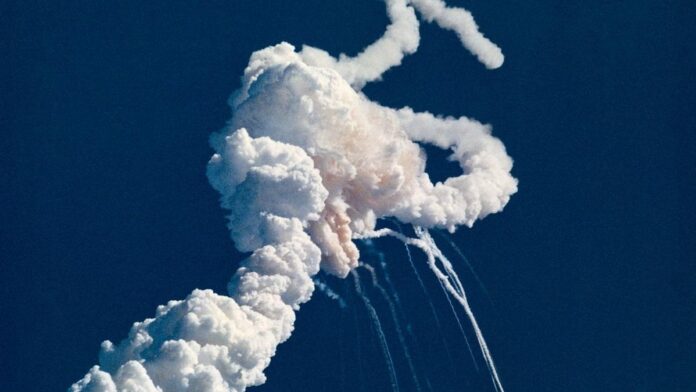The second space shuttle launched by NASA to enter space was the Challenger. Tragically, during its 10th mission on January 28, 1986, just 73 seconds after liftoff, the Challenger exploded, resulting in the loss of all seven crew members and bringing about lasting changes to NASA’s space program.
Prior to this devastating incident, the Challenger achieved the milestone of becoming the second shuttle to reach space in April 1983. Over the course of nearly three years and nine successful missions, it accumulated a total of 62 days, 7 hours, 56 minutes, and 22 seconds in space.
Among its notable achievements, the Challenger facilitated the inaugural spacewalk of the space shuttle program on April 7, 1983. Additionally, it carried the first American female astronaut and the first African American astronaut into space.

Initially designated as a test vehicle by NASA, the Challenger underwent its construction by aerospace manufacturing company Rockwell International in November 1975. Subsequently, Rockwell sent the shuttle, then known as STA-099, to Lockheed Martin for structural testing beginning on April 2, 1978. At that time, NASA revealed that the available computer models lacked the sophistication needed to accurately calculate the stresses on the shuttle during various flight phases.
During an intensive 11-month period, the shuttle underwent vibration testing in a specially designed rig, capable of simulating all aspects of flight, from liftoff to landing. This custom machine utilized three hydraulic cylinders, each exerting 1 million lbs. of force, as stand-ins for the space shuttle’s main engines.
In 1979, NASA granted Rockwell International an additional contract to transform the test vehicle into a fully operational spacecraft. This decision aimed to augment the shuttle fleet to two spacecraft, with Columbia as the first. However, tragically, this plan also culminated in disaster.
The conversion process, undertaken by Rockwell, spanned two years and involved various enhancements. Workers reinforced the wings, replaced the simulated crew cabin with a genuine one, and incorporated heads-up displays for the astronauts working inside. The entire transformation was completed on October 23, 1981, as per NASA’s records.
On the chilly morning of January 28, 1986, as reported by Weather.com, the Challenger was set to embark on its 10th mission. Concerns arose among the shuttle’s engineers due to freezing temperatures, particularly regarding the integrity of the seals on the solid rocket boosters. Despite these concerns, Challenger took off at 11:38 a.m. Eastern time, garnering heightened media attention because it carried Christa McAuliffe, the first teacher destined for space, planning to conduct lessons while in orbit.
Tragically, the mission ended in disaster just 73 seconds after launch, with Challenger disintegrating on live television. The NASA launch commentator somberly reported, “Flight controllers here are looking very carefully at the situation. Obviously a major malfunction,” as fragments of the shuttle plummeted into the Atlantic.
In the aftermath, salvage crews spent weeks recovering shuttle pieces and the remains of the seven astronauts. Identified remains were returned to the families, while the others were interred in a monument at Arlington National Cemetery on May 20, 1986.
Investigations revealed that the technical cause of the accident could be traced to a degraded O-ring, a rubber seal on the solid rocket boosters, affected by the cold launch weather. The decision to launch in such frigid conditions was criticized, with a US House of Representatives report attributing the disaster to longstanding safety protocol failures and an unsustainable launch rate.
NASA responded to the Challenger tragedy by implementing technical modifications to the shuttle and initiating cultural changes in safety and accountability within the workforce. The shuttle program resumed flights in 1988.
Post-incident, Challenger’s wreckage was examined, and most pieces were laid to rest in abandoned Minuteman missile silos at Cape Canaveral Air Force Station.
The explosion led to significant changes in the space shuttle program, including a hiatus of 22 years for civilian flights, a shift of satellite launches to reusable rockets, and alterations in astronaut duties to enhance safety. The Manned Maneuvering Unit was not used again, and civilians, such as teachers or journalists, were not sent to space until Barbara Morgan’s flight aboard Endeavour in 2007.




